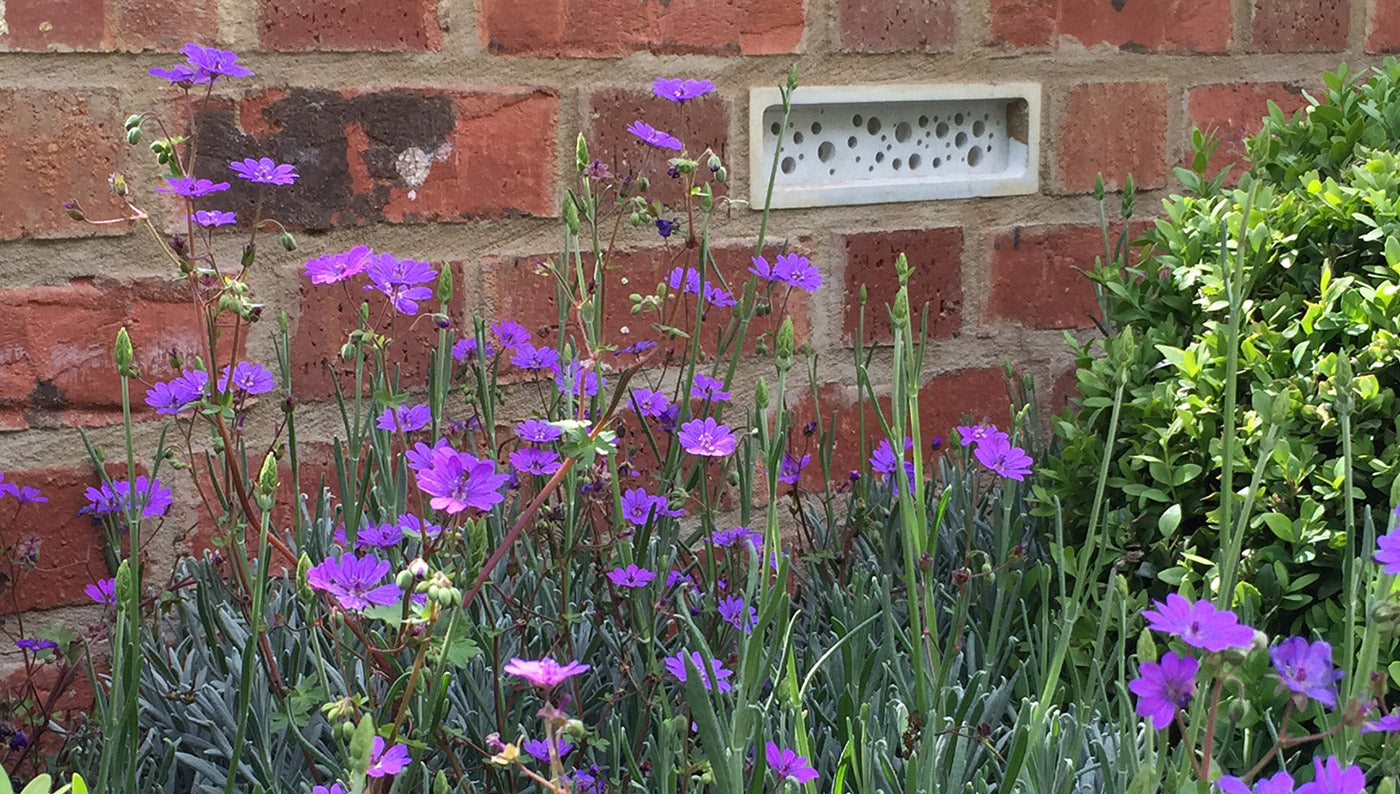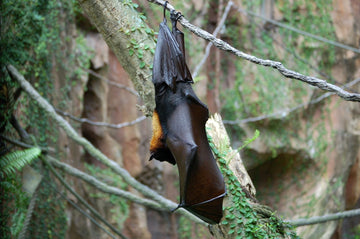Bats represent almost a quarter of all native mammals in the UK, but their nocturnal nature means that we aren’t always aware of their presence in our environment. There are currently 17 species of bat which are known to breed in the UK as follows:
- Common pipistrelle (Pipistrellus pipistrellus)
- Soprano pipistrelle (Pipistrellus pygmaeus)
- Nathusius’ pipistrelle (Pipistrellus nathusii)
- Daubenton’s bat (Myotis daubentonii)
- Bechstein’s bat (Myotis bechsteinii)
- Natterer’s bat (Myotis nattereri)
- Whiskered bat (Myotis mystacinus)
- Brandt’s bat (Myotis brandtii)
- Alcathoe bat (Myotis alcathoe)
- Barbastelle bat (Barbastella barbastellus)
- Brown long-eared bat (Plecotus auritus)
- Grey long-eared bat (Plecotus austriacus)
- Greater horseshoe bat (Rhinolophus ferrumequinum)
- Lesser horseshoe bat (Rhinolophus hipposideros)
- Noctule (Nyctalus noctula)
- Leisler’s bat (Nyctalus leisleri)
- Serotine (Eptesicus serotinus)
Our most common bat is, as the name suggests, the common pipistrelle. These tiny bats weigh the same as a 20 pence piece and can consume 3,000 small flies every night. Pipistrelles are recognisable by their erratic flights, zipping around shortly after sunset. Around 75% of all bat sightings are of these tiny mammals.

The noctule is a large bat that frequently emerges before sunset. To the untrained eye, it can look like a swift as it has narrow wings and flies high in open areas. Its distinctive steep dive to catch insects sets it apart if you don’t have a bat detector to hand.
The brown long-eared bat has a flight like a butterfly – slow and hovering. They are often the hardest to spot as they come out after dark, stick close to vegetation and fly within the canopy of trees whilst foraging. They are a common bat that is well worth looking out for though!
If you have seen a bat skimming the water of a river or lake, the likelihood is that this is a Daubenton’s bat. These hunt insects that are found in bodies of water and can be seen using their feet to grab the insects off the surface of the water.
Where Do Bats Like to Live?
Bats don’t build nests like birds. They live in roosts within natural features such as trees and caves and man-made features such as houses, churches, bridges and mines. Most of the UK species are crevice dwelling, only needing a gap the size of an adult thumb within which to roost. Bats are commonly found in houses beneath barge boards, under roof tiles, under hanging tiles and in cavity walls. Bats droppings can look like those of mouse but mouse droppings are hard and bats will always crumble.

How Can We Encourage More Bats?
There are several ways that you can make your environment more suitable for bats, whether you have acres of land or a tiny urban garden.
Installing bat boxes, such as the Green&Blue BatBlock where bats are known to feed is an excellent way to ensure local bat populations have access to safe roosting places, which will encourage breeding.
Bat boxes can be installed on trees or buildings and should be put as high as possible, in a sheltered but sunny position on a southern or western aspect. Installing several boxes all facing different directions will give the best chance for them to be used; sometimes it can take years for a bat to decide to use an artificial bat box!
The best way to encourage bats is to make your garden more wildlife friendly. Plant a mixture of flowering plants, vegetables, trees and shrubs. Include night-scented stock as well.
Think about a water feature for your wildlife garden. A pond, marshy area or bog will provide an insect breeding ground providing food for bats.

You can encourage other natural insect predators to your garden such as hedgehogs, birds, hoverflies, wasps, ladybirds and centipedes by leaving logs and piles of dead leaves undisturbed. Providing regular food and water for garden birds will keep the ecological balance of your garden preserved.
Bats are a protected and very important part of the UK’s ecosystem. If you want to understand how to avoid impacts on roosting bats or provide enhancements for bats within a development it is worth reaching out to a bat surveyor.
You can also visit the Bat Conservation Trust for more information about bats and ways you can support them.
Blog written and supplied by Ecology by Design.


4 comments
We’ve always had bats flying around outside our house at night, quite small which I imagine are the common pipistrelle, however, the last couple a nights there’s been a huge bat flying around, a lot bigger than the ones we see normally, large wings. Any ideas what it could be? We live in the East Midlands by a park and fields. Thanks!
I live in Wolverhampton oxley area I saw a fair few bats last night I never saw them before in my garden it was so nice to see
Great to see that you’re providing more purpose-built roosts for bats and a quick rundown of UK species. However, the first image on a page about UK bats isn’t one of the species we have in the UK – it looks like a type of flying fox fruit bat. Any chance you could amend it to show one of the species we do have? The brown long-eared picture below it is lovely.
Julia Waller, Membership Secretary, Warwickshire Bat Group
Can you send me some information out about bats feel the past please